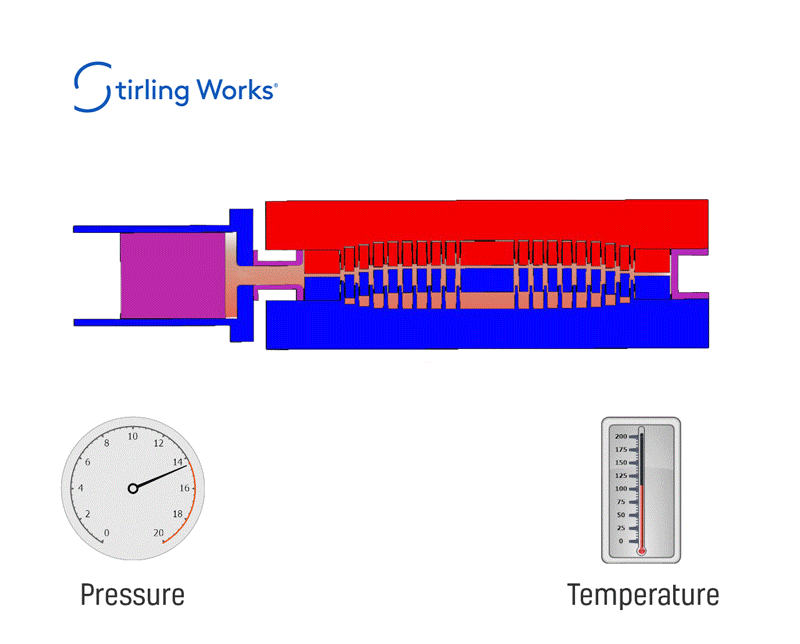Stirling Works Breakthrough Innovation
Since the industrial revolution The Stirling engine has constantly beguiled and frustrated both engineers and enthusiasts. The wonderfully simple concept of producing mechanical energy from the pressure change as a gas cools and warms offers an enormous range of potentially game changing solutions from the conversion of heat to mechanical and electrical energy.
But despite the interest and commitment of many companies, scientists, engineers and enthusiasts, the technology is still not playing a significant role in the conversion of heat to mechanical power and electricity.
Stirling Works have invented and proven a completely novel innovation for the most fundamental component of any Stirling engine – The Displacer. This component is responsible for moving the gas from the area where it is heated to the area where it cools.

Conventionally this is a piston in a cylinder.
Moving the displacer absorbs some of the energy being produced. Free piston designs have introduced spring mounted pistons to operate at natural frequency.
Non aerodynamic shape.
Not a good shape for heat transfer, so this is achieved by pushing the gas through a regenerator which introduces some performance compromises.
Stirling Works displacer is a volute spring.
Less fluid resistance to oscillations, and it is a naturally resonant spring by design.
Much more aerodynamic, so less power loss due to fluid drag.
The displacer has a hot and cold side separated by an insulator. It provides a large surface area so is very efficient at heat transfer to the gas. Furthermore, the cylinders have an interleaving spiral fin. The heat transfer is vastly improved without the need for a traditional regenerator.


